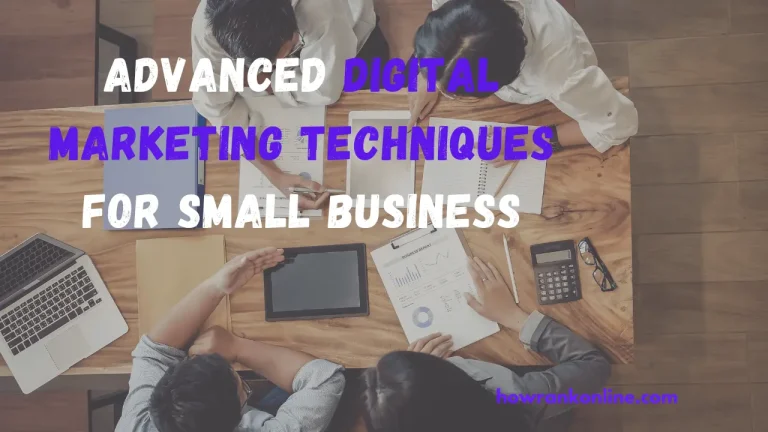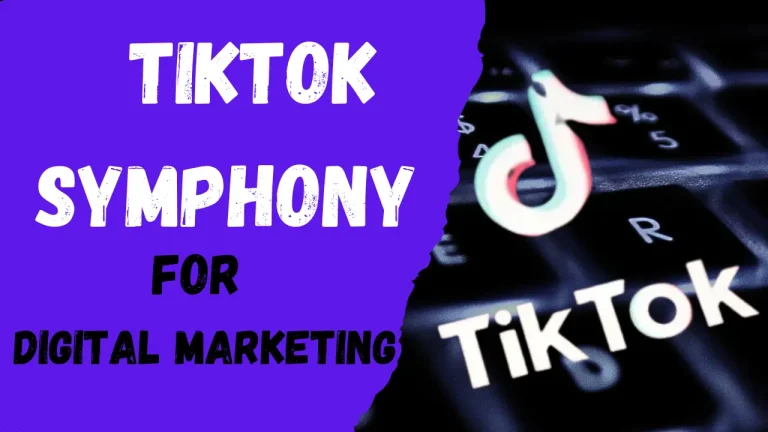Gone are the days when a business website merely served as a digital business card. Today, your website is the central hub of your operations, offering valuable insights to consumers, selling products and services, and generating leads. If your website isn’t performing as it should, it’s time to explore these advanced digital marketing strategies to attract more visitors to your content.
Table of Contents
Understanding Website Marketing
Website marketing, often referred to as digital marketing, involves strategically promoting your website to attract more attention from consumers or businesses. The primary goal is to drive traffic to your site, increasing visibility for your products, services, and overall brand. Numerous techniques can be employed to market your website effectively, which we will explore shortly. Every company should develop a comprehensive marketing strategy to boost website traffic and maximize its online presence.
The Importance of Website Marketing
The internet offers a vast network that can significantly aid any business in building a brand, increasing sales, and enhancing its reputation. Savvy businesses understand that leveraging a website is crucial for driving sales. However, most websites won’t attract visitors without targeted marketing efforts. This is why website marketing is essential. It enables a business to reach its target audience, informing them about the website and the products or services it offers.
10 Essential Website Marketing Strategies
There are numerous methods to effectively market a website. Here are ten strategies your company should consider to enhance your website’s visibility and performance:
1. Email Marketing
Email marketing is a widely used strategy for promoting websites. It involves sending emails to a list of subscribers who have opted in to receive communications from your business. These subscribers agree to receive periodic emails that direct them to your website. The content of these emails can vary greatly, including product promotions, sales announcements, discount coupons for subscribers, or valuable tips and tricks. The primary objective is to get the email opened and read, encouraging the recipient to click a link that takes them to a specific page on your website, whether it’s the homepage or a page dedicated to a particular product or service.
Building an email list takes time, but it is composed of individuals who have chosen to receive updates from your company, indicating a built-in sense of loyalty. These subscribers are interested in your news and sales updates. However, it is crucial not to overwhelm them with too many emails, as this can lead to unsubscribes. Ensuring that each email provides genuine value will help maintain their interest and keep them engaged with your content.
2. Organic Social Media Marketing
Organic social media marketing involves creating a business account on social media platforms and sharing posts with your followers. These posts can include advertisements, announcements about new products, tip lists, or before-and-after project photos. You might also request testimonials from your audience. Each post should include a link to your website, making it easy for people to visit your site.
The goal is to create engaging content that your followers will like and share. When a post is widely shared and viewed, it can go viral. Viral posts significantly increase your brand’s exposure to new audiences. A post with millions of views indicates strong interest in your content, leading to an influx of new followers. This expanded audience will see your future posts, further promoting your brand and driving traffic to your website.
3. Search Engine Marketing/Search Advertising
When you perform a Google search, the top of the search results often includes “sponsored results.” These are paid advertisements from companies targeting specific keywords relevant to the search. Search engine marketing involves creating these paid ads, which are designed to appear when users type in certain keywords.
For instance, if your company sells insurance, you might purchase ads for the keyword “auto insurance.” When a user searches for “auto insurance” on Google, the sponsored results appear at the top of the list, followed by organic search results.
The goal of search engine marketing is to create ads that closely match the search intent of the user, making them more likely to click on the sponsored link. This targeted approach increases the chances of driving relevant traffic to a specific page on your website, improving visibility and potentially leading to higher conversions.
4. Paid Social Ads
If your social media presence isn’t generating sufficient traffic, consider investing in paid social media ads. These are sponsored posts that appear within users’ social media feeds, targeting specific demographics. Paid social ads are highly effective in today’s market due to the extensive user data available on social media platforms. This allows advertisers to easily target ads to users who are likely to be interested in their products or services.
You’ve likely experienced this personalized advertising on your own social media accounts. For instance, if you’ve been researching air fryers online, you may start seeing ads for air fryers when you scroll through your social media feeds. This targeted advertising leverages not only your recent search history but also other relevant data to present ads to users who are most likely to engage with them, increasing the effectiveness of social media advertising campaigns.
Another example involves a company selling baby clothing. Social media platforms can target ads specifically to new mothers, effectively placing the ad in front of the most relevant audience. This targeted approach increases the likelihood of a click-through to the website, ultimately boosting the chances of a purchase.
5. SEO and Content Marketing
SEO involves strategically using certain keywords within your website’s content to improve its ranking on search engine results pages, particularly aiming for a position on the first page of Google. This approach is similar to search engine marketing but differs in that the company doesn’t pay for placement in the search results; instead, it relies on organic ranking. Achieving a high organic ranking increases the likelihood of users clicking through to your website, as top search results are perceived as the most relevant and trustworthy.
Content marketing is a component of SEO services. It entails creating content to promote specific products or services, often in the form of blogs or product reviews. This content informs consumers about the product’s features, benefits, and why they should consider purchasing it, serving as a subtle sales pitch. By incorporating relevant keywords, well-written content can rank organically on search engines, eliminating the need for paid search engine ads.
6. Guest Posts and Guest Blogging
Guest posting or guest blogging is a powerful website marketing strategy that involves creating content for another company’s website. The goal is to expose your brand, products, and services to a new audience by leveraging the existing audience of another website.
This strategy offers several benefits. Firstly, it allows you to showcase your company in-depth, setting it apart from competitors. The larger the website you guest post on, the broader your brand’s reach becomes. This exposure drives more traffic to your website, thereby enhancing brand loyalty. Additionally, being featured on another website validates your brand, as the hosting website is unlikely to associate with unreliable companies, preserving their reputation with their audience.
Moreover, guest posting provides valuable backlinks to your website. Backlinks are links from external sites that point back to your own. This not only directs traffic to your site but also improves your website’s SEO, as discussed earlier.
7. Press Releases
If your creative digital marketing company has noteworthy news to share with the public, issuing a press release is an effective approach. A press release provides media outlets with essential information about the news and your company. When picked up by media outlets, your company may be featured in news stories, significantly expanding your brand’s reach to the outlet’s audience. This exposure can introduce your brand to a new demographic of consumers that you may not otherwise reach, enhancing your credibility and establishing you as a leader in your industry.
Press releases need not always focus solely on product launches or new innovations. They can also highlight community involvement, such as sponsoring volunteer days. This showcases your company in a positive light, demonstrating that you are more than just a profit-driven entity and reinforcing consumer trust and loyalty.
8. Establish a Referral Program
Word-of-mouth recommendations from family and friends hold significant influence over purchasing decisions. Recognizing this, implementing a referral program can be immensely beneficial for your brand. Such a program incentivizes loyal customers to refer others to your business, often by offering them a gift or a special discount coupon.
Promoting your referral program through various marketing channels, such as email lists and social media platforms, can effectively spread awareness. As more people become aware of the program, you initiate a word-of-mouth campaign that amplifies your brand’s reach and drives sales of your products and services.
9. Request Online Reviews
Encouraging your customers to leave online reviews is an excellent strategy for enhancing brand awareness and consumer trust. With numerous review platforms available, from the Better Business Bureau (BBB) to Trustpilot and Yelp, obtaining reviews can significantly benefit your business.
When customers leave reviews on these platforms, they often include a link back to your website, providing valuable backlinks that can improve your website’s SEO performance.
You can prompt customers to leave reviews simply by asking them, or you can offer incentives, such as discounts on future services, to encourage participation.
10. Influencer Marketing
Influencer marketing works similarly to guest posting, as it exposes your brand to an existing, loyal audience of someone else. Influencers typically boast hundreds of thousands of followers on social media platforms. By offering them free products or payment for promoting your brand, influencers can give your brand a shout-out to their audience.
To the influencer’s followers, this shout-out serves as an endorsement of your products or services, signaling that they are of high quality and worth exploring.
Also Hit: AI Trends and Best Practices for 2024, How AI Reshape Advanced digital marketing
Leads To End
Crafting a strategy for your website’s marketing endeavors involves selecting campaigns that align with your financial resources and resonate with your intended audience. While the process may involve experimentation to find the perfect fit, the eventual payoff in terms of heightened brand recognition and broader consumer outreach makes it all worthwhile.







